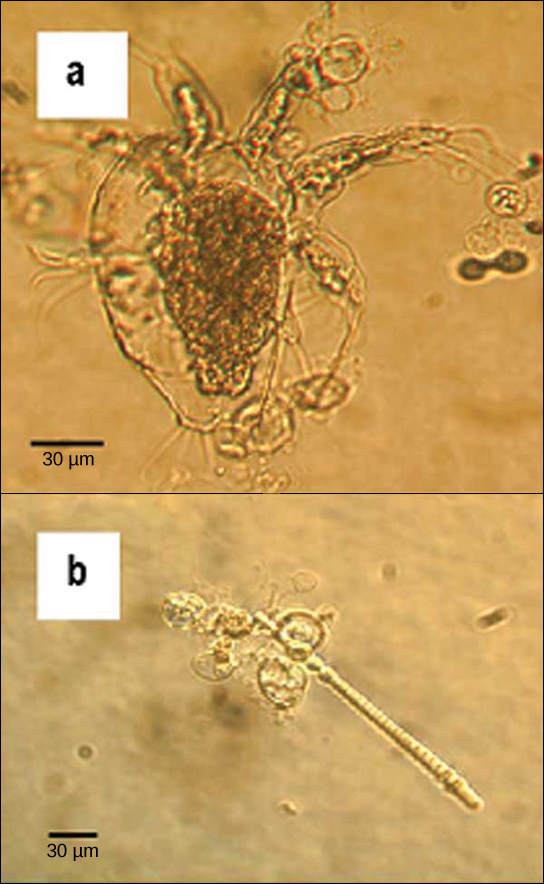| << Chapter < Page | Chapter >> Page > |
The kingdom Fungi contains five major phyla that were established according to their mode of sexual reproduction or using molecular data. Polyphyletic, unrelated fungi that reproduce without a sexual cycle, are placed for convenience in a sixth group called a “form phylum”. Not all mycologists agree with this scheme. Rapid advances in molecular biology and the sequencing of 18S rRNA (a part of RNA) continue to show new and different relationships between the various categories of fungi.
The five true phyla of fungi are the Chytridiomycota (Chytrids), the Zygomycota (conjugated fungi), the Ascomycota (sac fungi), the Basidiomycota (club fungi) and the recently described Phylum Glomeromycota. An older classification scheme grouped fungi that strictly use asexual reproduction into Deuteromycota, a group that is no longer in use.
Note: “-mycota” is used to designate a phylum while “-mycetes” formally denotes a class or is used informally to refer to all members of the phylum.
The only class in the Phylum Chytridiomycota is the Chytridiomycetes . The chytrids are the simplest and most primitive Eumycota, or true fungi. The evolutionary record shows that the first recognizable chytrids appeared during the late pre-Cambrian period, more than 500 million years ago. Like all fungi, chytrids have chitin in their cell walls, but one group of chytrids has both cellulose and chitin in the cell wall. Most chytrids are unicellular; a few form multicellular organisms and hyphae, which have no septa between cells (coenocytic). They produce gametes and diploid zoospores that swim with the help of a single flagellum.
The ecological habitat and cell structure of chytrids have much in common with protists. Chytrids usually live in aquatic environments, although some species live on land. Some species thrive as parasites on plants, insects, or amphibians ( [link] ), while others are saprobes. The chytrid species Allomyces is well characterized as an experimental organism. Its reproductive cycle includes both asexual and sexual phases. Allomyces produces diploid or haploid flagellated zoospores in a sporangium.

The zygomycetes are a relatively small group of fungi belonging to the Phylum Zygomycota . They include the familiar bread mold, Rhizopus stolonifer , which rapidly propagates on the surfaces of breads, fruits, and vegetables. Most species are saprobes, living off decaying organic material; a few are parasites, particularly of insects. Zygomycetes play a considerable commercial role. The metabolic products of other species of Rhizopus are intermediates in the synthesis of semi-synthetic steroid hormones.

Notification Switch
Would you like to follow the 'Biology' conversation and receive update notifications?